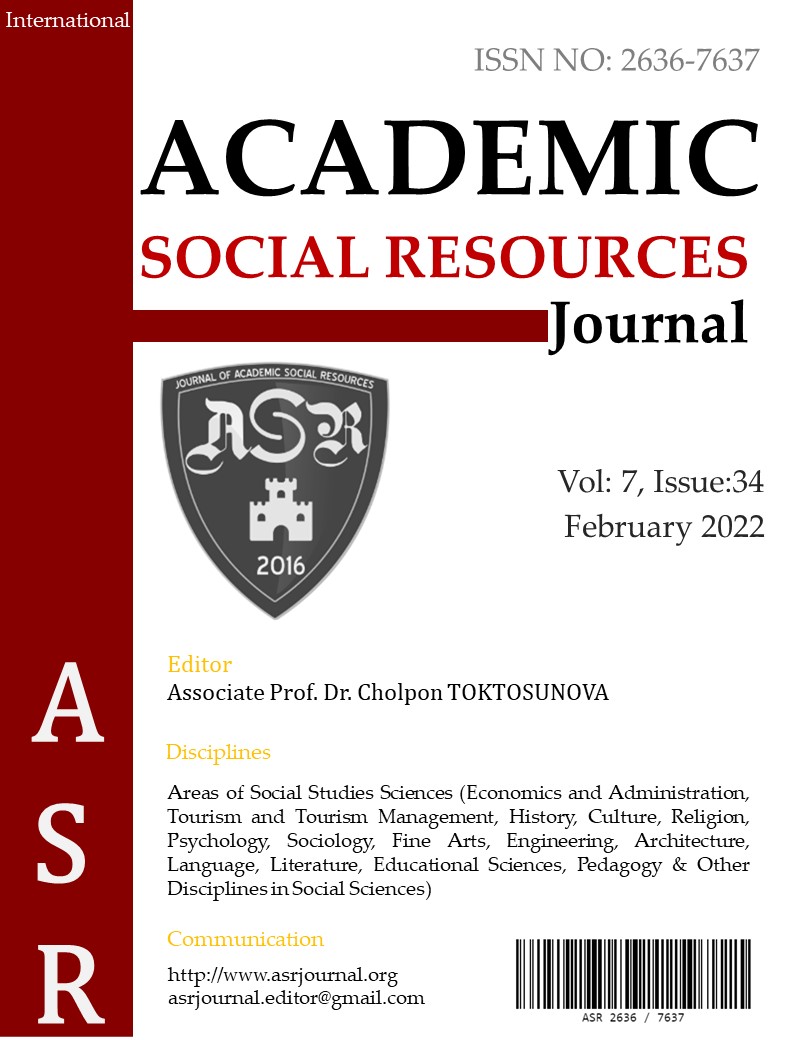Author :
Abstract
Biyolojik terör, kasıtlı olarak hayvanlarda veya insanlarda hastalık veya ölüm geliştirmek için bulaşıcı maddeler kullanmaktır. Biyolojik savaş, biyoterörizm ve pandemilere karşı bir savunma olarak biyogüvenlik, ulusal ve uluslararası güvenlik gündemlerinde yeterince vurgulanmamıştır. COVID-19 salgınının ortaya çıkışı dünyayı bir salgının yıkıcı potansiyeline karşı uyandırmış ve biyolojik savaşın nasıl görüneceğine dair canlı bir tablo çizmiştir. COVID-19'un neden olduğu küresel pandemi, terör örgütlerinin de dikkatini çekmiştir. Terör örgütleri, modern sanayi uluslarıyla aynı altyapı ve bilimsel yeteneklere sahip olma eğilimindedir ve bu da potansiyel olarak biyokimyasal cephanelikler geliştirmelerine izin vermiştir. Biyolojik silah programları için altyapı gereklilikleri, nükleer bir cephaneden nispeten daha ucuz ve çok yönlü olmasıyla daha da kolaylaşmıştır. Kolayca elde edilebilen ve basit teknolojilerle, bir yeraltı biyo-silah programına yatırım yapma yeteneği yaygın olarak bulunmaktadır. Biyoterörizm tehdidi ülkelerin proaktif bir şekilde birlikte çalışmalarını ve bir sonraki kasıtlı, hatta kasıtsız salgını önlemek için ortak stratejiler geliştirmelerini gerektirmektedir. COVID-19 salgını modern toplumun viral enfeksiyonlara ve kırılma potansiyeline ne kadar savunmasız olduğunu göstermiştir. Küresel koronavirüs salgınının gelecekte teröristler tarafından biyolojik silah kullanımını artırabileceğini göstermiştir. COVID-19 salgını dünyanın, doğal ve insan kaynaklı biyolojik tehditlere karşı savunmasızlığını kanıtlamıştır. Çalışmada teröristlerin virüsleri biyolojik silah olarak olası kullanımının doğal ve yapay tehdit endişesi tartışılmıştır.
Keywords
Abstract
Biological terrorism refers to the use of contagion substances to deliberately induce diseases or death in animals or humans. As a defense against biological warfare, bioterrorism and pandemics, biosecurity has not been addressed enough in national and international security agendas. The emergence of the COVID-19 pandemic has woken the world up in terms of facing the destructive potential of a pandemic and provided a live demonstration of what biological warfare would look like. The global pandemic of COVID-19 has also attracted the attention of terrorist organizations. Terrorist organizations tend to possess the same infrastructure and scientific capabilities as modern industrial nations, and this has potentially allowed them to develop biochemical arsenals. Biological weapons programs have become even easier as the infrastructure they require is relatively more inexpensive and versatile in comparison to a nuclear arsenal. The ability to invest in an underground bioweapon program with easily accessible and simple technologies is widely available. The threat of bioterrorism necessitates countries to proactively collaborate and develop mutual strategies to prevent a future intended or unintended pandemic. The COVID-19 pandemic has shown the extent to which modern society is defenseless against viral infections and potential destruction. This has demonstrated that the present pandemic may increase the use of bioweapons by terrorists in the future. The current pandemic has proven the defenselessness of the world against natural and anthropogenic biological threats. This study discusses concerns about natural and anthropogenic threats regarding the potential use of viruses as bioweapons by terrorists.
Keywords
- Bloom, M. (2020). “How Terrörist Groups Will Try to Capitalize on the Coronavirüs Crisis”,
- Bloom, M. (2020). “How Terrörist Groups Will Try to Capitalize on the Coronavirüs Crisis”, https://www.justsecurity.org/69508/how-terrorist-groups-will-try-to-capitalize-on-the-coronavirus-crisis/
- BWC/MSP/2005/MX/WP.14, (2014). Infectious Diseases, Biosafety and Biosecurity – Prepared by Germany, 1-5 December 2014, https://undocs.org/pdf?symbol=en/bwc/msp/2014/wp.10 (27.10.2021).
- CDC. (20 Ekim 2017). “Bioterrorism.” Centers for Disease Control and Prevention, Centers for Disease Control and Prevention, www.cdc.gov/glanders/bioterrorism/index.html (09.12.2021).
- Dass, R.A.S. (2021). Bioterrorism: Lessons from the COVID-19 Pandemic. Counter Terrorist Trends and Analyses, Vol. 13, No. 2, pp. 16-23
- d’Errico, P. (2001). “Amherst and Smallpox.” Nativeweb.Org, University of Massachusetts/Amherst, Department of Legal Studies, www.umass.edu/legal/derrico/amherst/lord_jeff.html (15.11.2021).
- Dökmeci, A.H. ve Çavlan, B. (2020). Biyolojik Silah:Biyolojik Savaşlar, Pandemiler Ve Covid-19, Ejons International Journal On Mathematics, Engineering-Natural Sciences, 16. 841-859. Doi: 10.38063/ejons.338.
- EICPT. (2020). COVID-19: Is Bioterrorism on the Rise Now?. https://www.eictp.eu/en/covid-19-is-bioterrorism-on- the-rise-now/?_x_tr_sl=en&_x_tr_tl=tr&_x_tr_hl=tr&_x_tr_pto=nui%2Csc (13.11.2021).
- EURACTIV. (30 Mart 2020). After the pandemic: COVID-19 exposes threat of biological warfare. https://www.euractiv.com/section/politics/opinion/after-the-pandemic-covid-19-exposes-threat-of-biological-
- warfare/ (16.11.2021).
- FBA. Amerithrax or Anthrax Investigation. https://www.fbi.gov/history/famous-cases/amerithrax-or-anthrax- investigation (23.11.2021)
- James, R. ve Borrie, J. (2020). ¿Nos espera un futuro más sombrío debido a las armas biológicas? https://elpais.com/elpais/2020/06/02/planeta_futuro/1591109458_151568.html (21.11.2021)
- Jansen, H.J., Breeveld, F.J., Stijinis, C., Grobusch, M.P., (2014). Biological warfare,bioterrorism, and biocrime. Clinical Microbiology and Infection. Volume 20, Issue 6, June, pp. 488-496
- John Hopkins. (2003). Biological Weapons. https://www.jhsph.edu/research/centers-and-institutes/johns-hopkins- center-for-public-health-preparedness/tips/topics/Biologic_Weapons/BioWeapons.html (19.11.2021).
- Khamlichi, Samar .(2020). Bioterrorism as a New Form of Global Threat: COVID-19 Case. https://en.eipss- eg.org/wp-content/uploads/2020/06/Bioterrorism-as-a-New-Form-of-Global-Threat-COVID-19-Case.pdf
- Kılıç, S. (2006). Biyolojik Silahlar Ve Biyoterörizm . Türk Hijyen ve Deneysel Biyoloji Dergisi , 63 (1) , 1-20. Laqueur, W. (1999). The New Terrorism, Oxford University Press, New York, USA.
- Leitenberg, M. (2005).Assessing the biological weapons and bioterrorism threat, Strategic Studies Institute, US Army War College, Carlisle, PA.
- NTI. (2021). Biological Weapons Convention (BTWC), https://www.nti.org/education-center/treaties-and- regimes/convention-prohibition-development-production-and-stockpiling-bacteriological-biological-and-toxin-
- weapons-btwc/ (25.11.2021).
- Suk, JE., Zmorzynska, A. , Hunger, I. et al. (2011).Dual-use research and technological diffusion: reconsidering thebioterrorism threat spectrum https://journals.plos.org/plospathogens/article?id=10.1371/journal.ppat.1001253Udell, Gabrielle (2021). Is Covid-19 a Biological Weapon?. https://wp.nyu.edu/schoolofprofessionalstudies- ga_review/is-covid-19-a-biological-weapon/ (16.11.2021).
- UN (2020). Biological Weapons Convention, https://www.un.org/disarmament/biological-weapons/ (23.11.2021).
- World Health Organization. (2006). Biorisk management: laboratory biosecurity guidance. World Health Organization. https://apps.who.int/iris/handle/10665/69390 (09.11.2021).
- Yüksel, O. ve Erdem, R. (2016). Biyoterörizm ve Sağlık. Hacettepe Sağlık İdaresi Dergisi. 19(2). 203-222.





